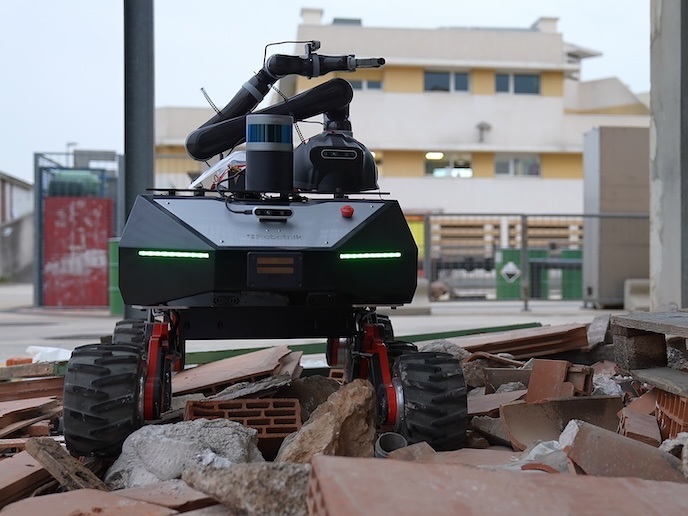Technology-driven solutions help keep first responders safe
When disaster strikes, time is of the essence – which is why in the movies you see first responders arriving at the scene and immediately jumping into action. But in real life, things don’t happen so quickly, and for good reason. “Before first responders can get to work, they need to ensure that the disaster area is secured enough for them to intervene,” says Rozenn Marechal, a researcher at CS Group France(opens in new window). Unfortunately, this reconnaissance is both time-consuming and full of risks for the first responders. But emerging technologies, including robots, drones and situational awareness, are changing the emergency response game. Take for example the EU-funded INTREPID(opens in new window) project, which is leveraging the most innovative technologies to develop and validate a ground-breaking, secure and scalable solution to help first responders safely explore and assess a disaster zone. “The project aims to enhance the safety, speed and effectiveness of first responders in the early hours after a disaster, saving time and lives,” adds Marechal, who coordinated the project.
Meeting the actual needs of first responders
The INTREPID platform is an end-to-end solution that integrates such technologies and tools as unmanned vehicles for exploration, advanced situational awareness capabilities, and intelligence amplification-based decision support. “To ensure that our platform answers the actual needs of first responders, we involved them throughout the entire project, from defining the platform’s capabilities to final validation,” explains Marechal. As a result, the project was able to create a next-generation solution for coordinating large-scale disaster responses. “Our user-centric interface makes the platform easy for first responders to use, while its versatility ensures it can be used across a wide range of disaster scenarios,” notes Marechal.
Exploring and assessing a disaster without ever entering the building
One of those scenarios is an explosion at a local hospital. “As part of our validation process, we tested the INTREPID platform in a number of simulated disasters(opens in new window), including a huge explosion, possibly terrorist-related, that was detonated at a hospital located outside Madrid,” remarks Marechal. During the simulation, first responders faced possible structural damage, the presence of chemical substances, fire and potential malevolence – all risks that could affect both the victims and the rescue teams. To mitigate these risks, first responders used the INTREPID platform to implement real-time positioning and a connected field network. This in turn allowed them to dispatch autonomous vehicles, including both ground and aerial drones, to record images and data about the hospital. This data was used to create a digital twin of the disaster zone, which first responders could analyse and virtually explore using augmented reality devices and a range of 3D modelling and mapping tools. “First responders successfully used INTREPID technologies to safely inspect the building, searching for potential threats and making a first assessment of the location of victims and their status, all without ever entering the building,” says Marechal.
Increasing safety and operational capacity of first responders
This simulation, along with simulated flood and industrial accidents, demonstrate how the integrated INTREPID platform can increase the safety and operational capacity of end users and, ultimately, save more lives. “Our work has redefined disaster response, replacing much of the initial risk with technology-driven solutions that will help keep first responders safe and allow them to start saving lives faster,” concludes Marechal.



